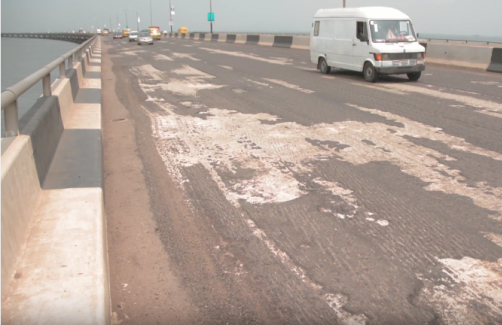
The Federal Government on Wednesday said that the emergency rehabilitation/ maintenance of the Third Mainland Bridge would begin on July 27.
Federal Controller of Works, Lagos, Adedamola Kuti, announced this at a stakeholders’ meeting at the Ministry of Works office in Lagos.
Kuti said that the repair works on the bridge would be staggered over a period of 27 months and would be handled by Borini Prono Construction Company.
The meeting was convened by the ministry for stakeholders to brainstorm on effective traffic diversion and management to prevent gridlocks during the period.
Some of the stakeholders at the event include NUPENG, National Union of Road Transport Workers (NURTW), Association of Maritime Truck Owners (AMATO), Lagos State Traffic Management Authority (LASTMA) and the police.
He noted that the bridge would be totally shut to traffic on the first three days for the contractor to carry out various tests on it.
Kuti said that subsequent closures would be on partial basis.
He said, “A Dynamic Test on Bridge Expansion Joints on Third Mainland Bridge is to be carried out between Friday, July 27, 2018, and Sunday, July 29, 2018, and it has been done in such a way that it will have minimum impact on road users.
“Consequently, the Third Mainland Bridge will be closed to traffic by 12.00 midnight of Thursday 26th July 2018 and be opened by 12.00 midnight Sunday 29th July 2018.
“Alternative routes will be plied during this period and traffic control will be in place to direct and help traffic movement.
“We regret any inconvenience this might cause road users as this closure is inevitable,’’ he said.
He appealed for the patience of road users and promised that all alternative routes would be repaired to make them smooth for easy access.
Also, the Lagos State Sector Commander of the Federal Roads Safety Corps, (FRSC), Hyginus Omeje, appealed to motorists to use mass transportation facilities during repair works on the Third Mainland Bridge.
Omeje told journalists that the vehicular occupancy ratio in Lagos was 1:1 which meant that there was an average of one driver per vehicle that plied the road hence, the usual heavy traffic.
He said that all the traffic regulatory and law enforcement agencies at the event were going to work in synergy to prevent gridlock.